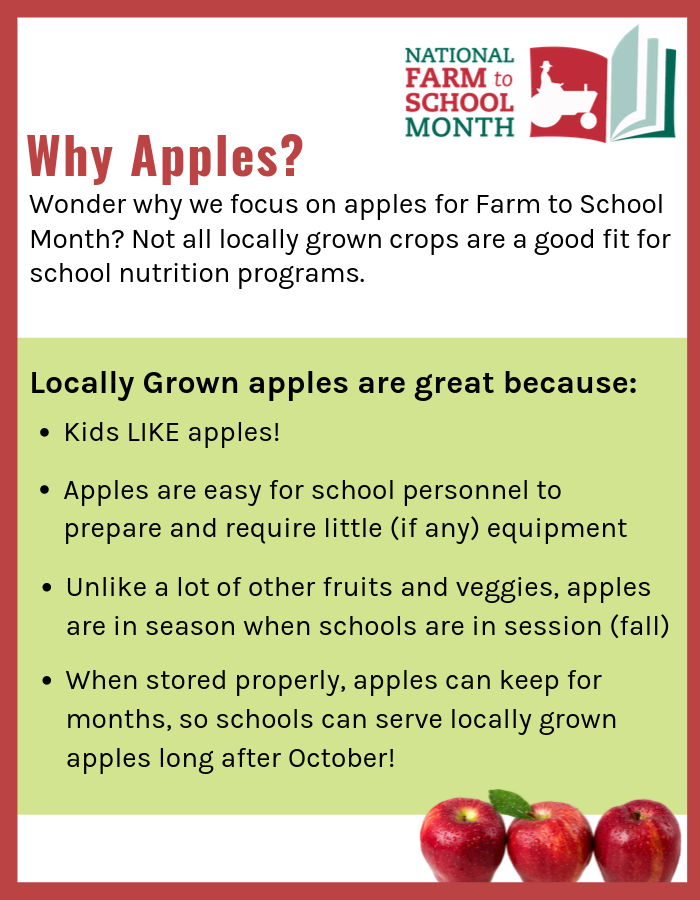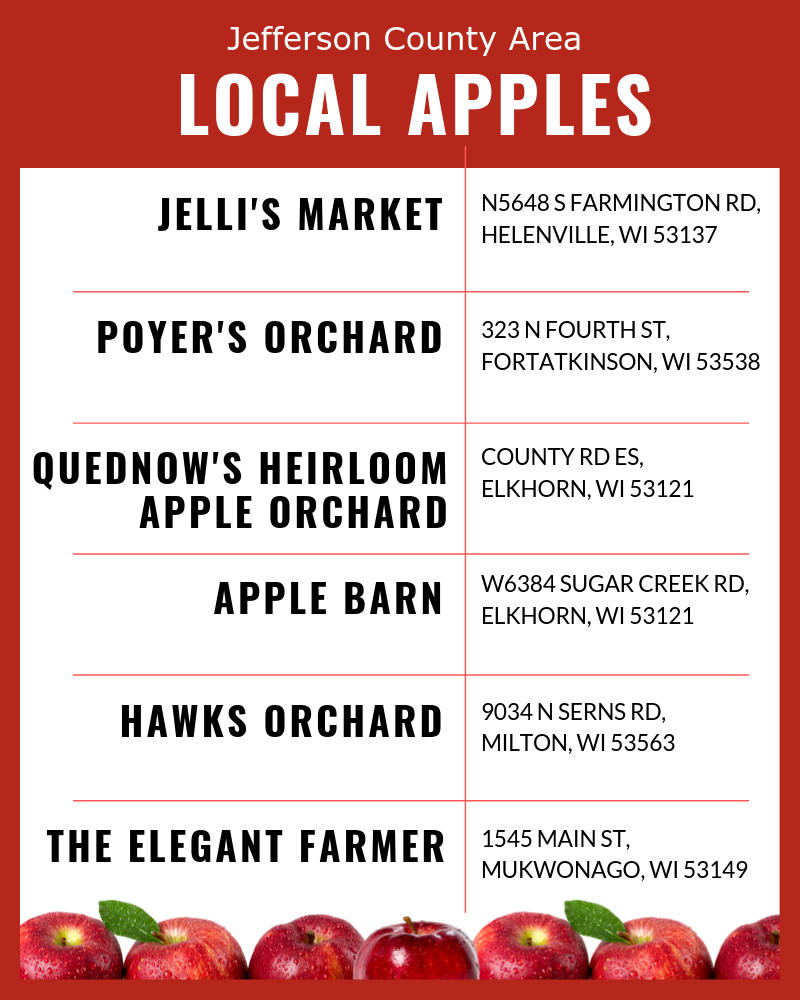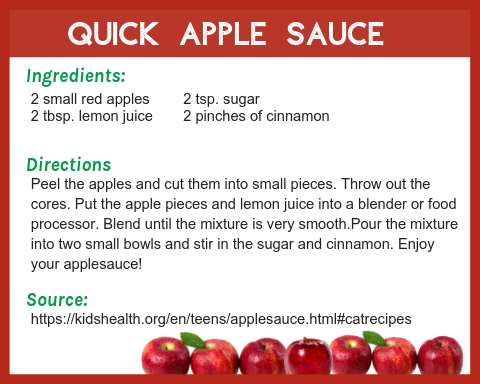October 11, 2019
On the menu: Apples!
 October means it’s time for the Great Lakes Great Apple Crunch! In celebration of National Farm to School Month, communities all over Wisconsin are crunching into apples. It’s a chance to celebrate those nutrition-packed little fruits and the local farmers that grow them.
October means it’s time for the Great Lakes Great Apple Crunch! In celebration of National Farm to School Month, communities all over Wisconsin are crunching into apples. It’s a chance to celebrate those nutrition-packed little fruits and the local farmers that grow them.
Are apples healthy?
Apples are inexpensive, easy to eat, and available all year. They are also a healthy food for you! Apples are considered a good source of:
- Fiber – Pectin, a soluble fiber in apples, helps prevent constipation and lower cholesterol.
- Phytochemicals/Flavonoids – Quercetin, catechin, chlorogenic acid, and anthocyanin are phytochemicals found in apples. They help prevent cell damage and have anti-inflammatory effects.
- Vitamins – Apples have lots of vitamins and especially Vitamin C, which helps your body control infections and heal wounds.
In fact, apples have been shown to lower your risk of heart problems, certain types of cancer, and even asthma. Some research suggests that apples can reduce the risk of diabetes by helping to prevent cell damage in the pancreas, where insulin is produced. And, the fiber in apples has been shown to aid in weight control, by slowing digesting and creating a feeling of fullness for longer than other foods.
New research is looking at the interaction between the fiber and phytochemicals unique to apples and how those work together to keep your heart healthy. As the old saying goes, “An apple a day…” might prove to be scientifically accurate.
How about the peel?
You’ve probably heard that an apple’s nutrition is in the peel. Apple peels are impressive. There are some phytochemicals in the peel that are not present in the flesh of the apple. And, if you had to choose 1 part of the apple, the peel would have more nutrition than the flesh. But… the flesh has vitamins, antioxidants, and fiber, as well. And not everyone can (or will) eat the peel. So, if the peel is not an option for some reason, go ahead and eat the apple without the peel. You’ll still get almost all the same benefits, just not as much!
Of course, your best option for getting the most out of an apple is to eat the whole thing (after washing it, of course). When you eat the whole apple (peel and flesh), you get more fiber, more phytochemicals, and more vitamins.
How about juice?
In the process of making apple juice, the fiber and a lot of the phytochemicals are filtered away. If you want the health benefits of apples, juice is not your best option. Cider is processed differently. While cider has a lot less fiber than a raw apple, it keeps some of the phytochemicals. So, you get more of the apple’s health benefits when you choose cider over juice.
Are apples grown locally?
They are! Did you know that there are over 100 varieties of apples grown commercially in the United States? In fact, the US is the 2nd largest producer of apples in the world (China is the largest). While Wisconsin is not a top apple producer, we have over 120 apple orchards that grow and sell apples.
The Jefferson County area has six orchards. The available apples will depend on the time of year and the weather. Check out orchard’s Facebook page for up-to-date information on what apples are available!
One advantage of buying apples at an orchard is that you can try apple varieties that are not available in larger grocery stores. And, our local orchards have a wide selection. Here’s a list of varieties that our local orchards grow and sell throughout the year. If you are looking for a specific variety, call ahead to be sure they still have that variety in stock.
Looking for a quick apple sauce recipe that the (older) kids can help make? Try this one at
https://kidshealth.org/en/teens/applesauce.html#catrecipes


Sources:
https://www.webmd.com/food-recipes/news/20000621/benefits-of-eating-fruit#2
https://www.hsph.harvard.edu/nutritionsource/food-features/apples/
https://www.aicr.org/press/health-features/health-talk/2014/oct14/apple-juice-cider-nutrition.html
